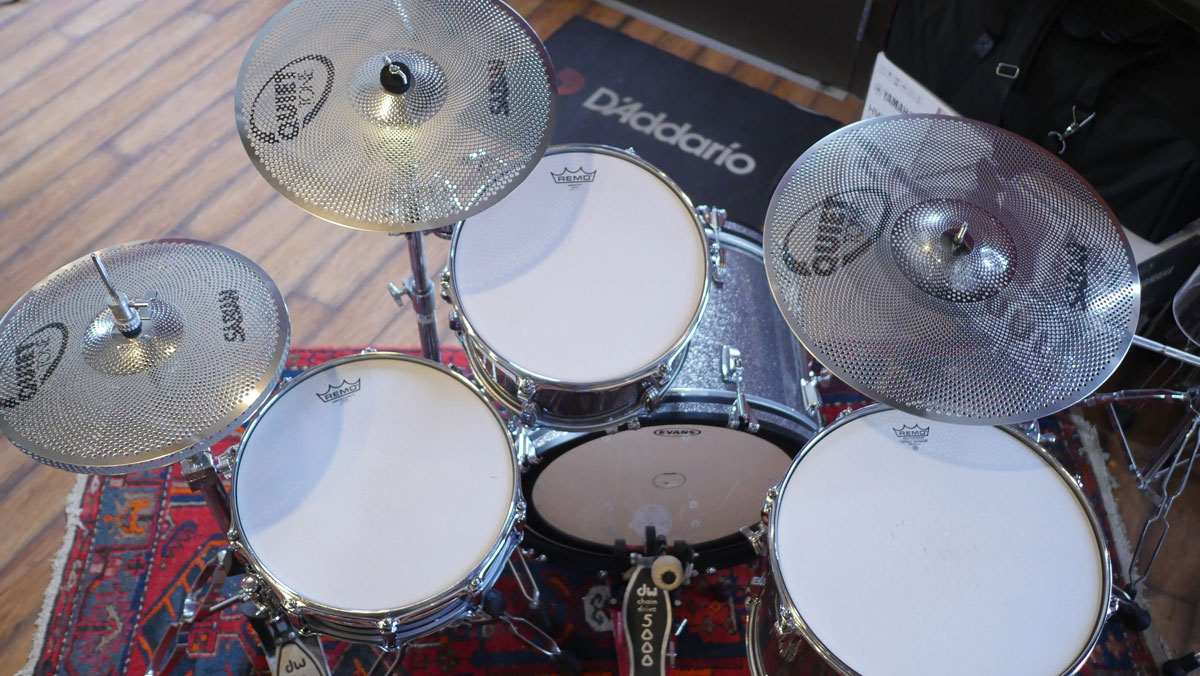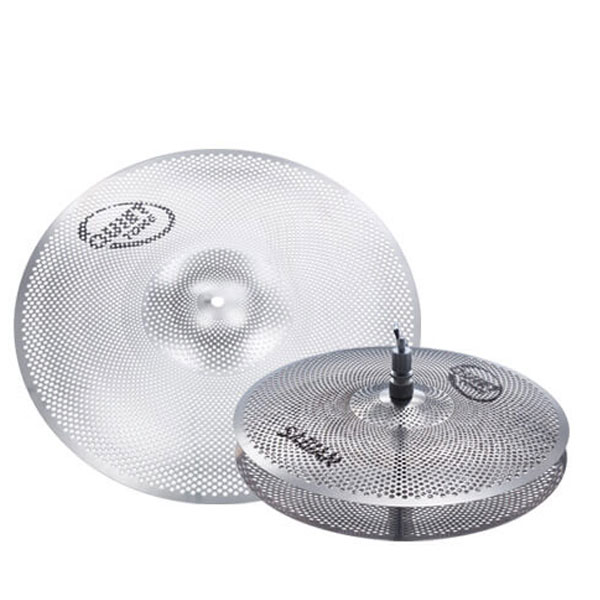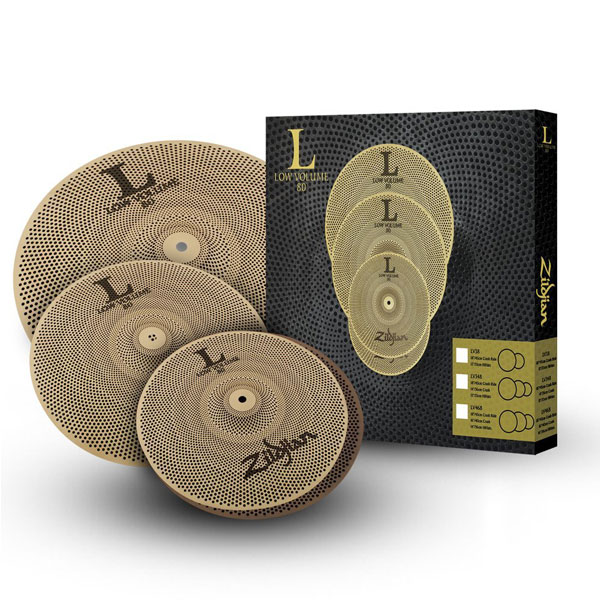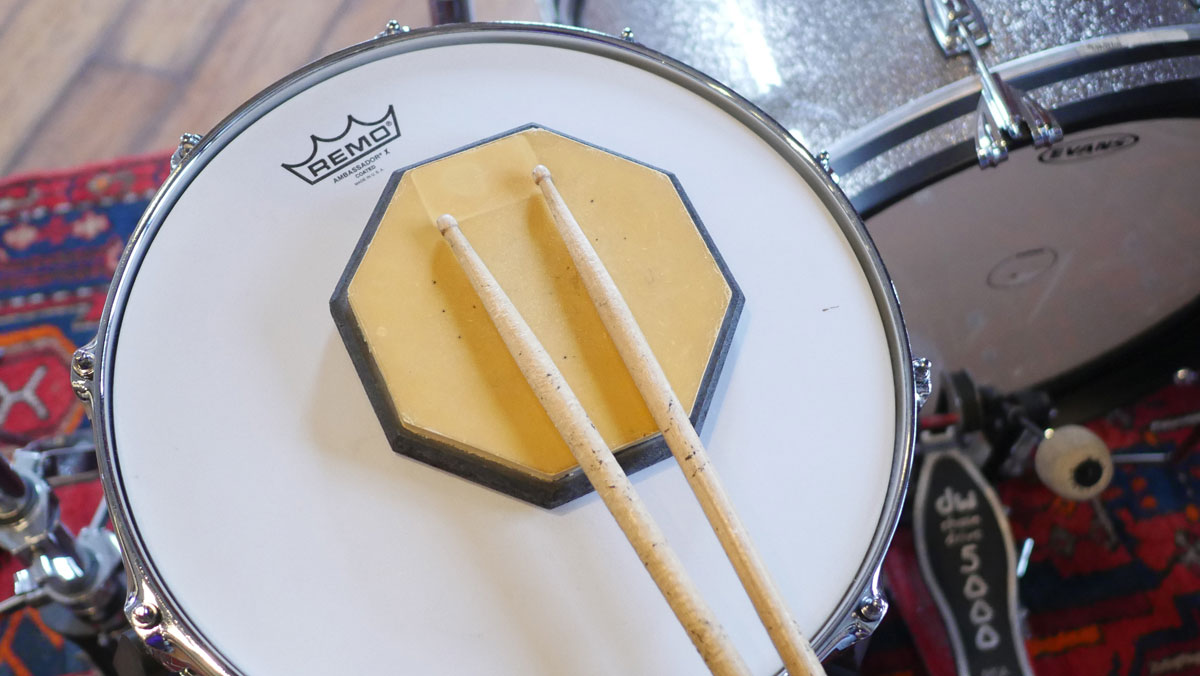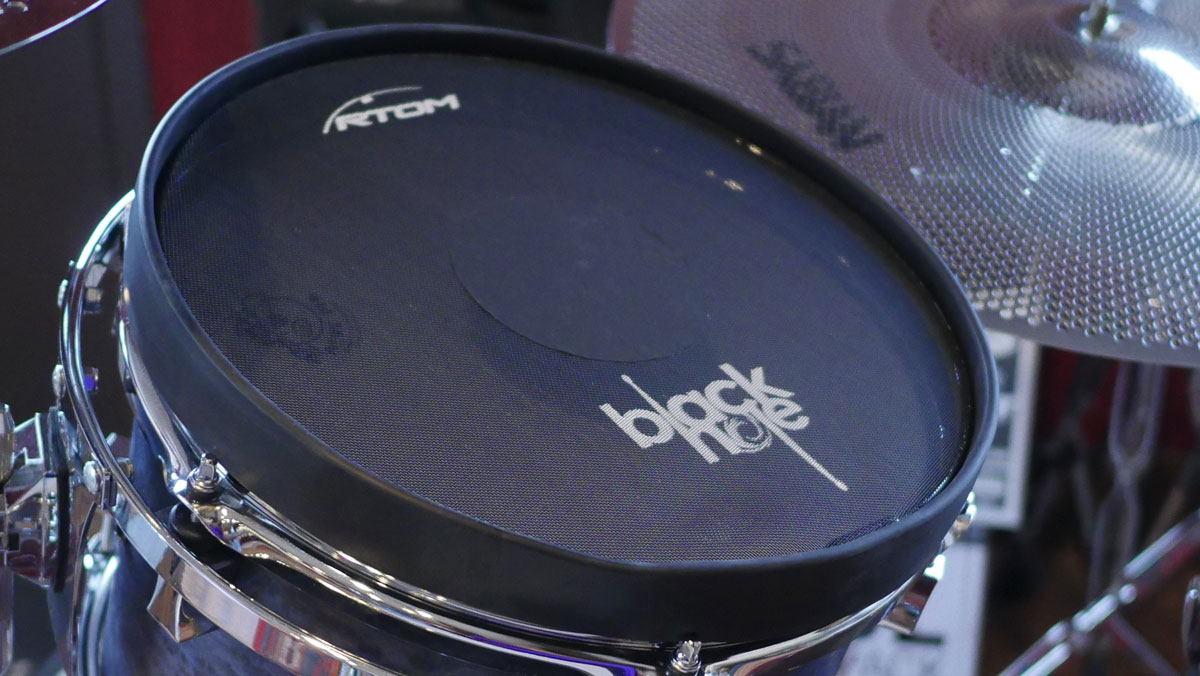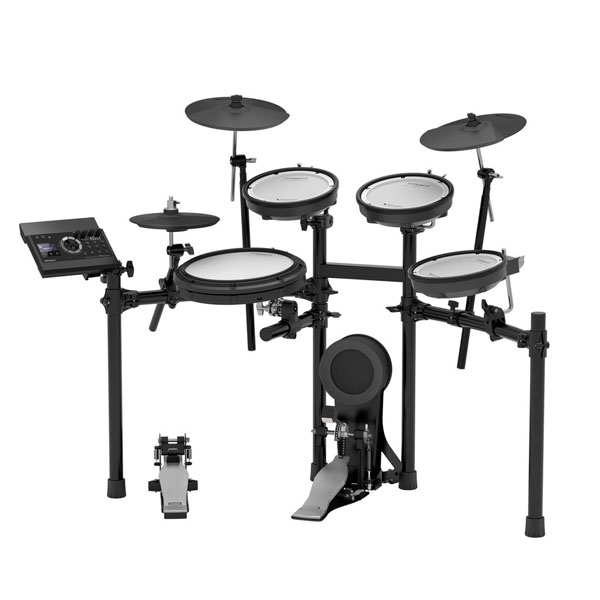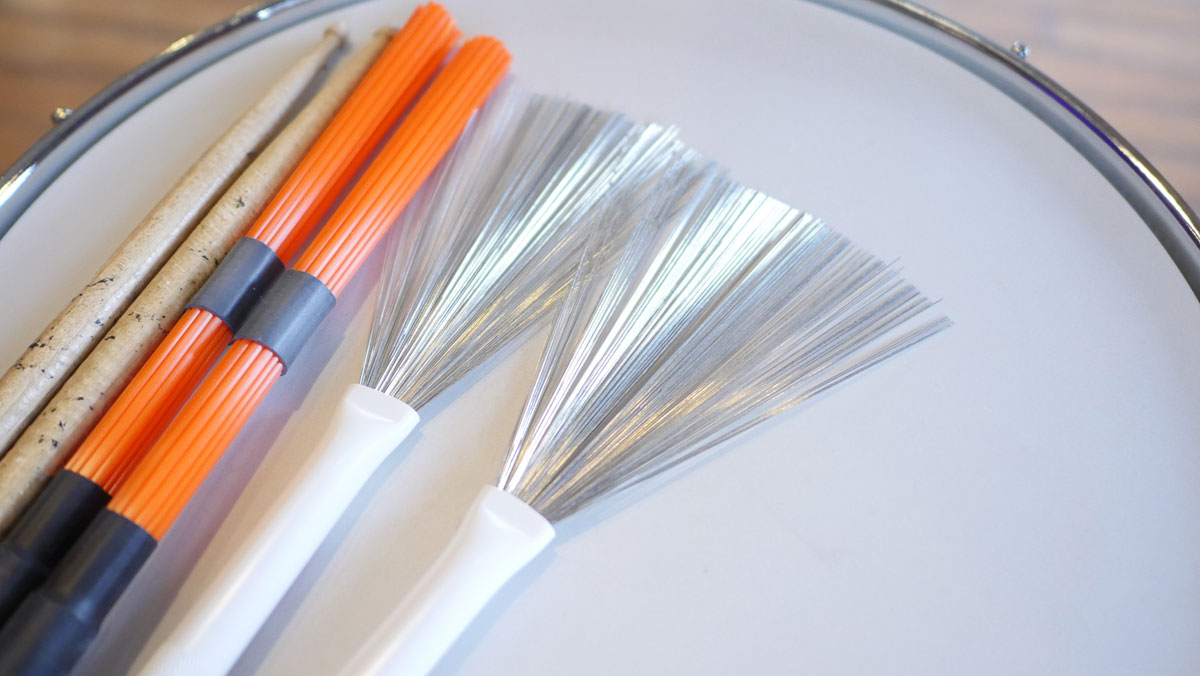As drummers, there are very few avenues where you can express yourself without being heard in some capacity. Let’s face it, drums can be loud. Whether it be acoustic drums or electronic drums, sound will travel and some people may be less than happy to hear your sonic expression. Thankfully, there are few ways where you can make the drums quieter so that you can get your groove on.
Here’s our list of tips to reduce drum volume:
Mesh drum heads
For years now, many of the intermediate and pro-level electronic drum sets have been using mesh heads as a way to replicate the feel of an acoustic drum as well as minimize the overall volume. Mesh heads on an acoustic set can be tuned much like traditional heads, so you can choose tight or loose tensions depending on your preferred rebound needs while still getting a little bit of tone. By changing your batter heads(leave the resonant head as it is) to mesh heads, you’ll greatly reduce the volume of the drums. This is a great semi-permanent solution as they cost around the same as any other set of batter heads and they can be changed back to normal heads as the need arises. So this is certainly a cheaper option than replacing your kit!
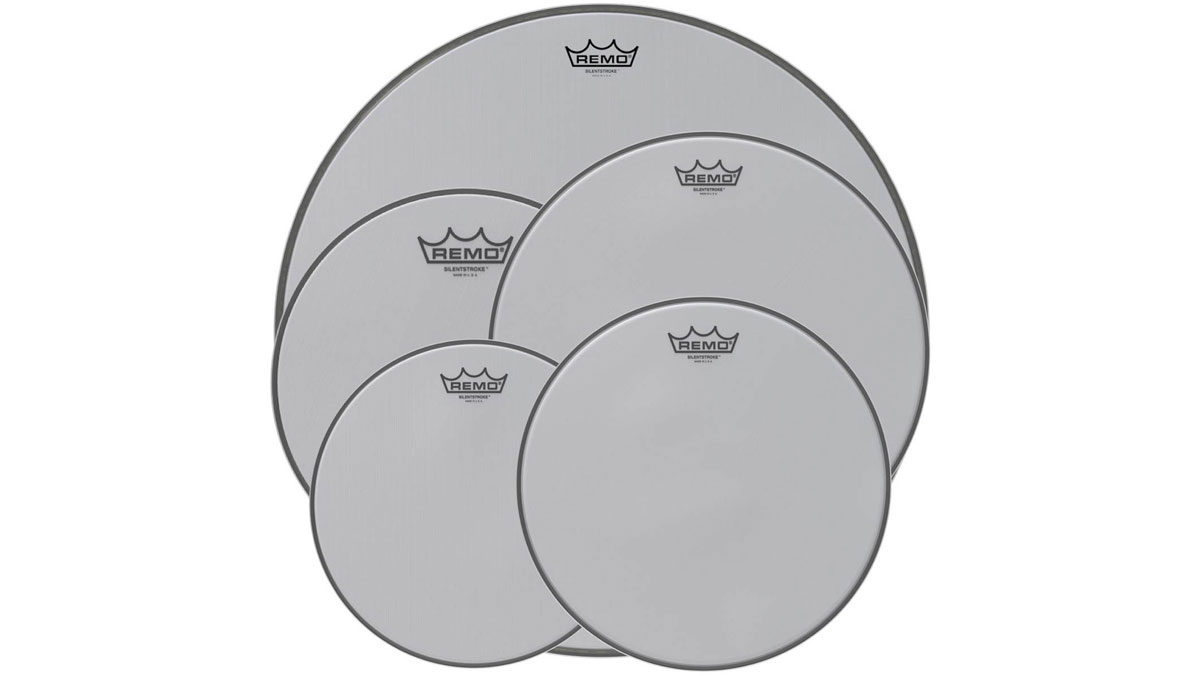
Low Volume Cymbals
In recent years, cymbals manufacturers have finally been able to solve a problem that has plagued drummers for years by creating low volume cymbals. By creating dozens of tiny holes in each cymbal, they are able to reduce the cymbal volume by 80% in some instances. Most importantly, these cymbals still feel and respond like traditional cymbals. When compared to drum mutes or electronic cymbal pads, the Low Volume cymbals will feel more like natural playing rather than practice pad torture.
Practice Pads and Drum Mutes
Drum mutes and practice pads are a quick and easy way to reduce drum volume. They’re soft rubber pads similar to the bottom of a mousepad that you place on top of your drumheads. There is also a drum mute option for cymbals that will help tie the set together. One of the great benefits is that you can easily remove them when you want to play at full volume. Practice pads will deliver the best stick rebound while the drum mutes will have a softer rebound. While the softer rebound might sound like a negative, it’s actually a great way to build technique as you will have to work a little bit harder to get notes out of the pads rather than relying on the rebound.
Electronic Drums
Electronic drums have certainly come a long way in a relatively short amount of time. The early iterations were full of noisy rubber pads, low-quality samples, and minimal kit choices that helped pave the way for a new landscape of materials and sounds. On the lower end of the price spectrum, the majority of the sets will have rubber pads which can still make a fair amount of noise. If you live in an apartment or condo, this might not be the best choice. Many of the manufacturers are now adopting mesh heads which provide a quieter attack and a response that is more like an acoustic set. Most of these sets will provide the ability to tune the heads much like an acoustic set so that you can adjust your rebound and tone to an extent while reducing your volume. With a variety of sets to choose from, the new generation of electronic drums offer high-quality sounds and features that will probably blow you away..
Change Your Drumsticks
Often overlooked, you can reduce some of the drum and cymbal volume by simply changing your sticks. Thinner sticks can change the sound, but so can materials as well. Getting away from oak or hickory and going to maple can have an impact on your sound. Don’t forget rods or brushes too. Rods have a different sound and rebound to drumsticks, but they’ll still give good tone while reducing drum volume. The most dramatic change in volume reduction would be switching to brushes. Brushes will provide minimal rebound, but the benefits will be the improvement of muscle strength and technique. Don’t forget about the bass drum beater either. By selecting a softer bass drum beater, it will also help knock down some of the overall volume of your bass drum and potentially change some of your dynamics in the process.
Improve Your Dynamic Control
There’s a saying “There are no loud drums, only loud drummers.” While it might cost little or next to nothing to change your dynamic control, this is probably the hardest one on the list to achieve. Dynamic control affects your tone and volume just as much as the materials. By controlling how soft or hard you approach the drums, you will dramatically improve your performance and expression. Keeping your neighbors and housemates happy is just an added benefit.
DIY Drum Dampening
For you DIY’ers, there’s probably a handful of things that already own within reach that you can reduce the volume of your drums today. Putting towels over your drums and cymbals is similar to drum mutes and fairly effective at reducing the sound. Keep in mind, thicker towels will reduce more volume but you will also lose some rebound as well. While you’re at it, grab that old blanket or comforter and fill up your bass drum to knock down some of that volume too. Some guys prefer using a piece of cloth underneath the drumhead to dampen the volume. By removing the batter head, you can cut pieces or cloth to fit between the bearing edge of the drum and the drumhead. You can also remove the resonant head to reduce some of the volume. Just make sure that you keep up with the removed hardware. And if you have some old drum heads laying around, you repurpose them by laying them upside down or cutting out the head from the collar and laying them on the drum. This will help reduce the volume but it’s also a trick that is used by a lot of studios to get a different sound of the drums.
Making drums quieter is not an easy task, but hopefully some of these suggestions can make it a little more bearable for you and your neighbors when it comes time to practice.


